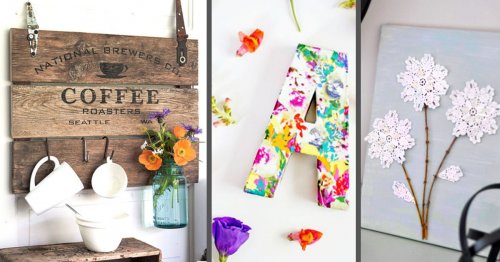
No matter whether you're an experienced or beginner knitter, it's essential to be familiarized with the terms and abbreviations that are used in knitting patterns. These abbreviations will help you read knitting patterns more efficiently and effectively. These abbreviations are usually used for brevity.
Abbreviations for knitting can be found alongside the number and type of stitches in knitting patterns. They can also be used to reduce long knitting patterns. These instructions include instructions for yarn over needle and skipping stitches. They also include knitting terms such as kfb, pfb, p2, p2, sdd, and skp.
The knit stitch, which is the most basic stitch in knitting, is the most common. This is a backwards stitch that is completed with the left-hand needle in front of the right-hand needle. It is also referred to as a purl stitch. The stitches can then be knit together. This stitch is often used for creating a texture. There are many types of knit stitches, and each one creates different patterns and characteristics. A pattern made up of purl and knit stitches is known as ribbed.
Knit terms also include terms for stockinette stitch, reverse stockinette stitch, and garter stitch. Stockinette stitch alternates rows of stitches. Stockinette stitch is usually used to create a fabric with a ribbed texture.

Many stitch patterns have been created by knitters. Some of these are charted. Many patterns include asterisks that indicate which stitches should be repeated. In addition, charts are used to create colorwork patterns. They can also be used to create cables-included patterns.
New ways have been developed by knitters to manipulate their purl stitches. Some knitters call this method "purlwise" knitting, and it can be done left or right. These stitches can be knit through the back.
Designers typically define special abbreviations in the beginning of the pattern. These abbreviations can be used to describe a particular pattern such as cable crossings or a stranded colourwork technique.
Knit terms include knitwise directions such as k1b and k2-b. These abbreviations refer to knitting into the row below. These directions are often used in lace patterns.
A yarn over is a term that's commonly used in lace knitting. A yarnover leaves a slit in the fabric. It is sometimes used in a lace pattern to create a ladder. It is also used in a crochet pattern to create a float.

Any pattern that has alternating colors is called "Fair Isle" by some knitters. This term can also be used to describe knitted fabrics that are made with a plaid pattern. Fair Isle is a smaller project. It is a limited-run fabric made mostly with colored thread. Each stitch must have a color change.
Knitting terms such as kwise (or pwise) can also refer to "knitwise", or "purlwise". These terms also indicate slip stitches. Slip stitch is made by passing the stitches across a needle already in use.
FAQ
What are your favorite hobbies right now
Popularity is not always a positive thing. It can be used to justify mediocrity. Most people don’t have the time to pursue any hobbies they desire. They're too busy working to make ends met. So what should you do if you don't have much free time? You could open a business.
However, this isn't easy. There are many obstacles to overcome before you can turn your idea into reality.
So if you're looking for something more exciting than running a business, you should consider pursuing a hobby.
Hobbies can be more than just creative pursuits. There are many different kinds of hobbies available. These hobbies include:
-
Gardening
-
Cooking
-
Photography
-
Reading
What are some good hobbies?
Hobby Ideas for those who love to teach and learn.
Hobbies allow you to enjoy what you love while also learning new things.
There are many kinds of hobbies. However, all have the same characteristics. They are usually enjoyable activities that don't require a lot of effort and can be very economical.
These include working with others to teach someone how to use an instrument or build an airplane.
Even though you might not think of yourself to be a teacher or a tutor, chances are there are things you can do that could help someone else.
So if you want to be more creative in your life, consider starting a hobby where you can use your skills to help others.
How do I get started?
The first step toward starting any new hobby is to decide what kind of activity you'd like to pursue.
Passion is essential once you have selected your subject.
Understanding why you are interested in a hobby is important. It will give you some direction and purpose.
After you have decided on the type of hobby you want to pursue, it's time to start planning.
Think about what equipment you'll need to purchase.
Consider whether classes or seminars are necessary.
Make sure you have enough space for your hobby.
It might also be worth considering joining a group or club. These groups often offer advice and support.
The last thing you should do is think about how much money it would cost to pursue your hobby.
Where can I find resources for learning more about hobbies?
There are tons of websites devoted to helping people discover new hobbies.
Here are some of the favorites:
www.trythisathome.com - This site provides a list of over 100 different hobbies. It also includes information on how to get started on each one.
www.hobbyfinders.org is a site that offers thousands of activities. It allows you to search by location, skill level and interest.
www.indiebazaar.co.uk - IndieBazaar is an online marketplace designed specifically for independent artists and musicians. You will find hundreds of products that range from artwork to music gear on the site.
www.pinterest.com/explore/hobbies - Pinterest is a social media network that lets users "pin" images they find interesting onto their boards. Boards let users organize what they like into particular categories.
www.reddit.com/r/Hobbies Reddit allows users to share links to articles, videos and other content on their social media platforms. Voting allows users to vote for the most valuable posts.
What are the competitive hobbies?
Swimming, running, cycling, golfing and tennis are some of the competitive sports.
They're often enjoyed by people who are active and want to socialize.
If your hobby involves physical activity, you will likely find other people who share it.
You might consider joining a group or club that meets regularly to play together in sports.
You could also opt to take part in team games that involve playing alongside others.
These include cricket, football, netball, hockey, netball, soccer, rugby, cricket, rugby, batsball, hockey, volleyball, badminton squash, handball and table tennis.
There are many different types of competition.
Some competitions are organized for purely recreational purposes.
Others are designed to test the skill of competitors.
And still, others are designed to reward outstanding performance.
In these cases, the winners receive prizes.
Other competitions are designed to test the strength and stamina of competitors.
These are called endurance events.
For example, marathon races, triathlons, Ironman Triathlon, etc.
Athletes train hard before they compete in these events.
They will be required to follow a rigorous training program in order to prepare mentally and physically.
They might need to travel some distance during preparation.
It is important to keep in mind that not all athletes can compete in every event.
Statistics
- A new survey by Pew Research Center of teens ages 13 to 17 finds that 36% of girls feel tense or nervous about their day every day; 23% of boys say the same. (pewresearch.org)
- Studies show that just six minutes of reading can reduce stress levels by 60 percent. (oberlo.com)
- This 100% accurate personality-analyzing hobby quiz discovers your passion based on your characteristics. (quizexpo.com)
- 37% Video Games 36% Travel 36% Health and Fitness (quizexpo.com)
- Almost 80% of people claim to have no hobby. (hobbylark.com)
External Links
How To
How to learn a musical Instrument
There are many ways you can learn to play music. You could go to a school or buy a book. You could also take lessons from an experienced musician, watch videos online, and so on. Here are some tips and techniques to help you learn if your goal is to create your own learning path.
-
Find something that interests and you. If you don't like any of the instruments you see around, then you should try another one. It would be hard to get into playing an instrument if you don't enjoy doing it.
-
Be patient. Learning anything new takes some time. Don't expect to master everything right away. Instead, you should continue practicing every day.
-
Practice regularly. This can be done even when you are tired. This will ensure that you won't forget what you learned.
-
Make sure you choose a safe place to practice. You want to be in a place where you are not disturbed by others. It is important to keep the room clear of distractions. It is best to avoid listening to loud music nearby.
-
Have fun. Music should be enjoyed. It is important to have fun when practicing. You will be motivated to do more if you have fun.
-
Set goals. Setting goals will help you to know exactly what your goal is. Therefore, you will have no excuse for failing.
-
Keep track of your progress. Note down your successes and mistakes. It will help you become a better person over time.
-
Take breaks. Sometimes, you will just need to stop for a while. Take breaks to allow you to reflect on things.
-
Ask questions. Ask others if there are any doubts or questions regarding the instrument. They may be willing to help.
-
Listening is the best way of learning. Many musicians listen to songs that they like and imitate them. This allows them to understand the basic ideas behind the song.
-
Read books. Watching videos or taking classes will not teach you as much as reading books. Books also contain information that you cannot find elsewhere.
-
Join a group. Playing with other people will make you more practice. Plus, you will meet people who share similar interests as yours.
-
Take a look at tutorials. Tutorials are short videos that explain various topics in great detail. Tutorials are short videos that focus on one part of the instrument. Tutorials can be helpful in understanding difficult parts of an instrument.
-
You can try different methods. Some prefer to learn by listening, while others prefer reading. You can experiment until you discover what works for you.
-
Practice makes perfect. There is no way to be an expert overnight. It takes a lot of work to be able to perform well.
-
Get along with other musicians. Listening to others play your favorite songs can help speed up learning.